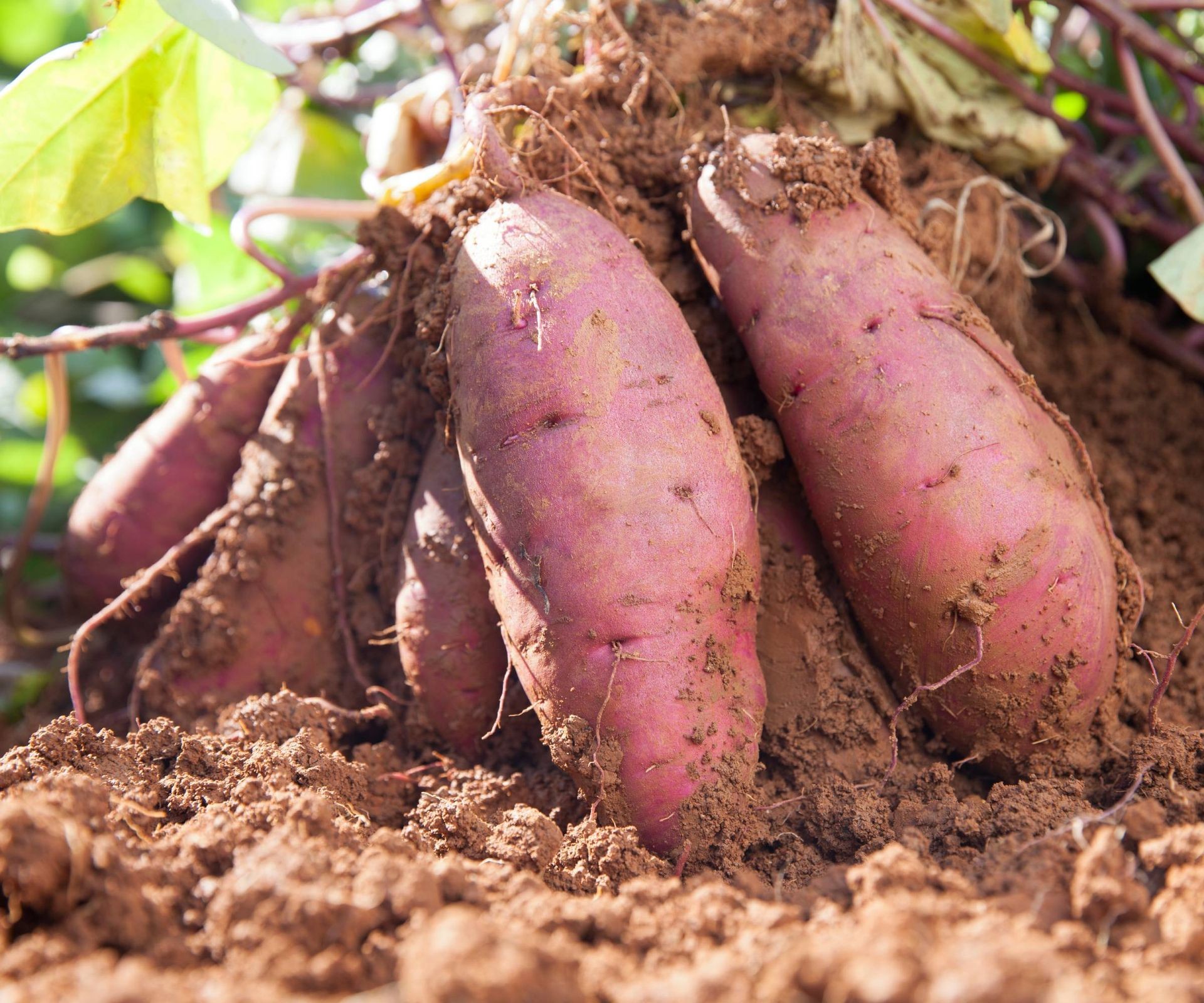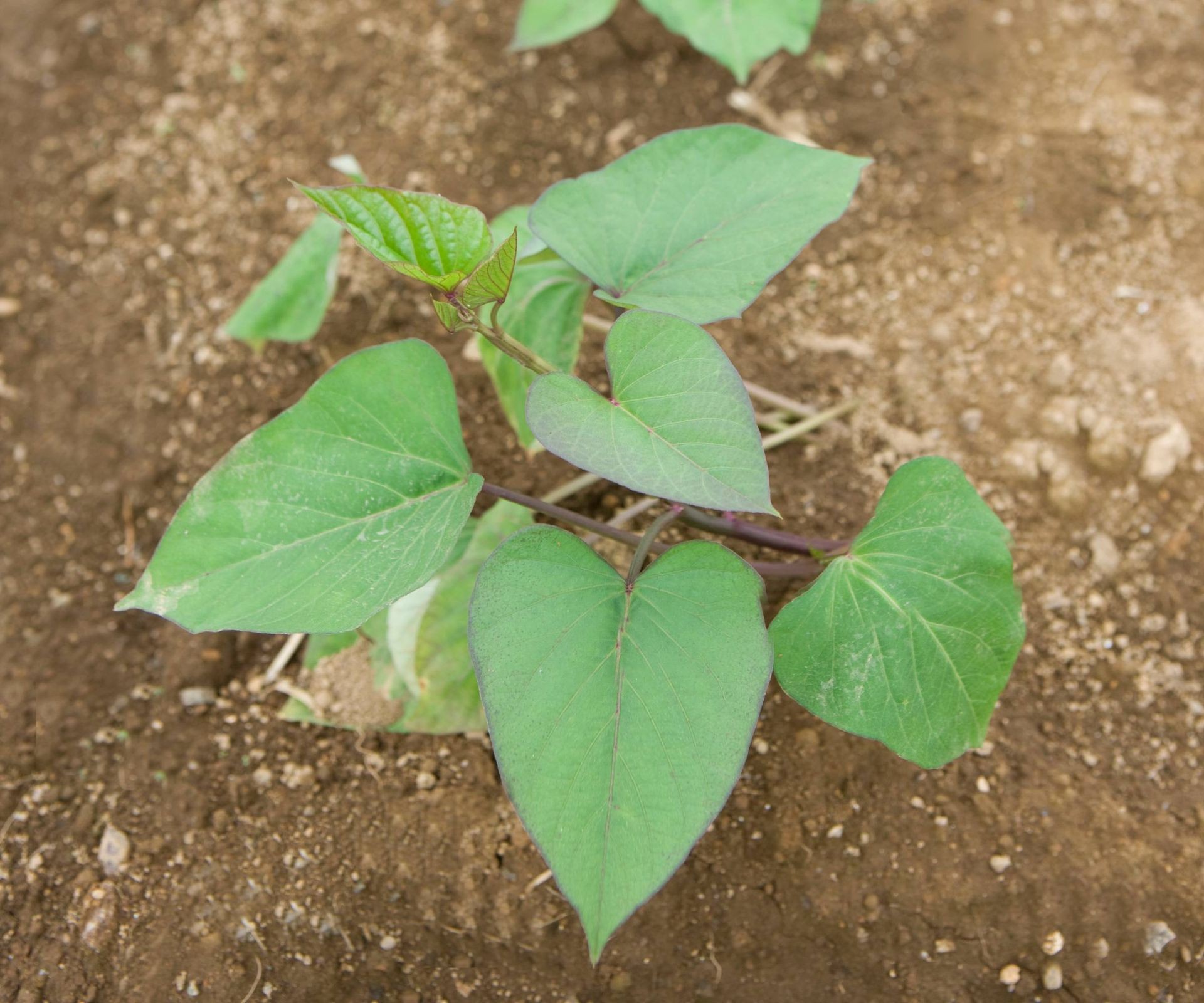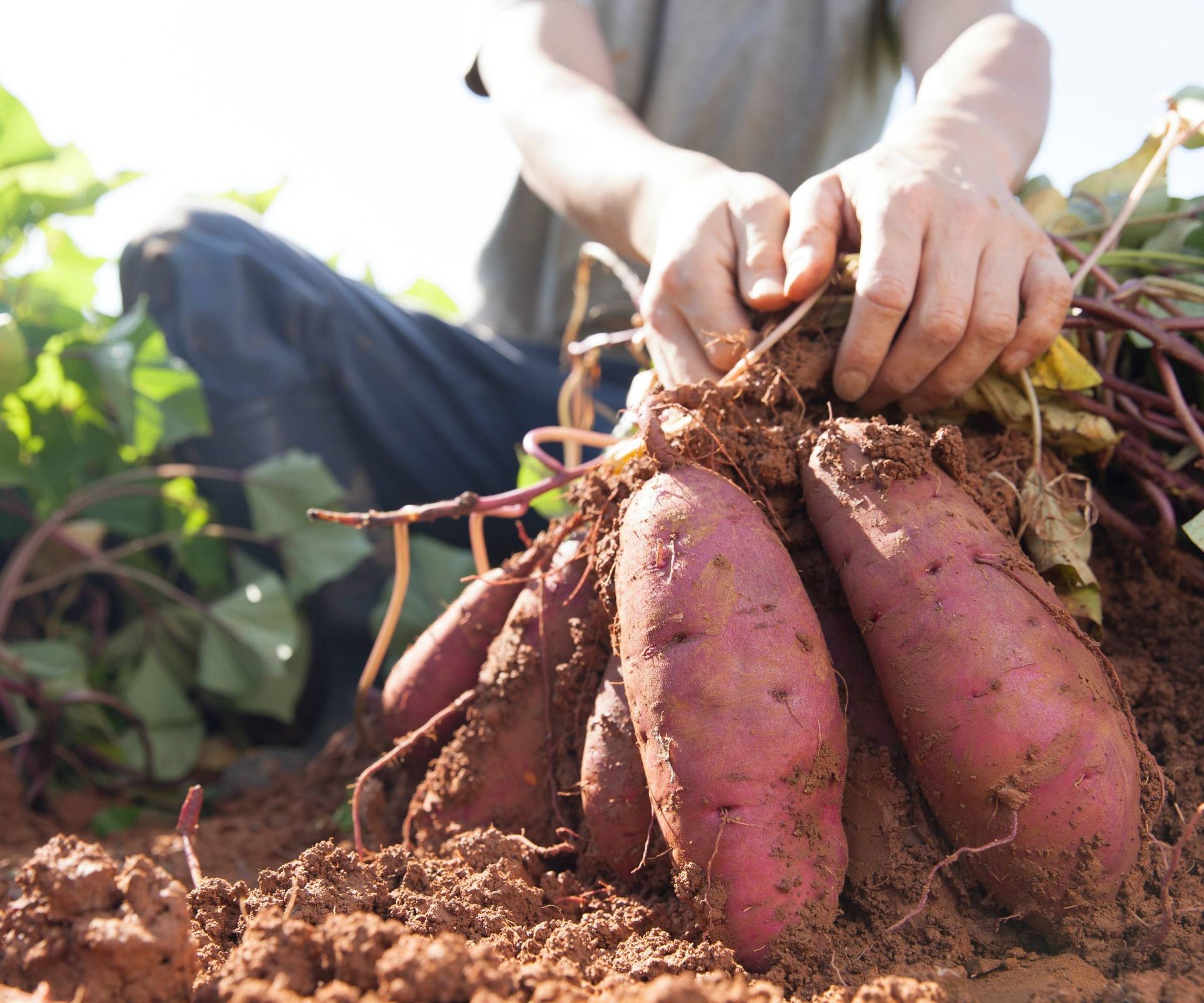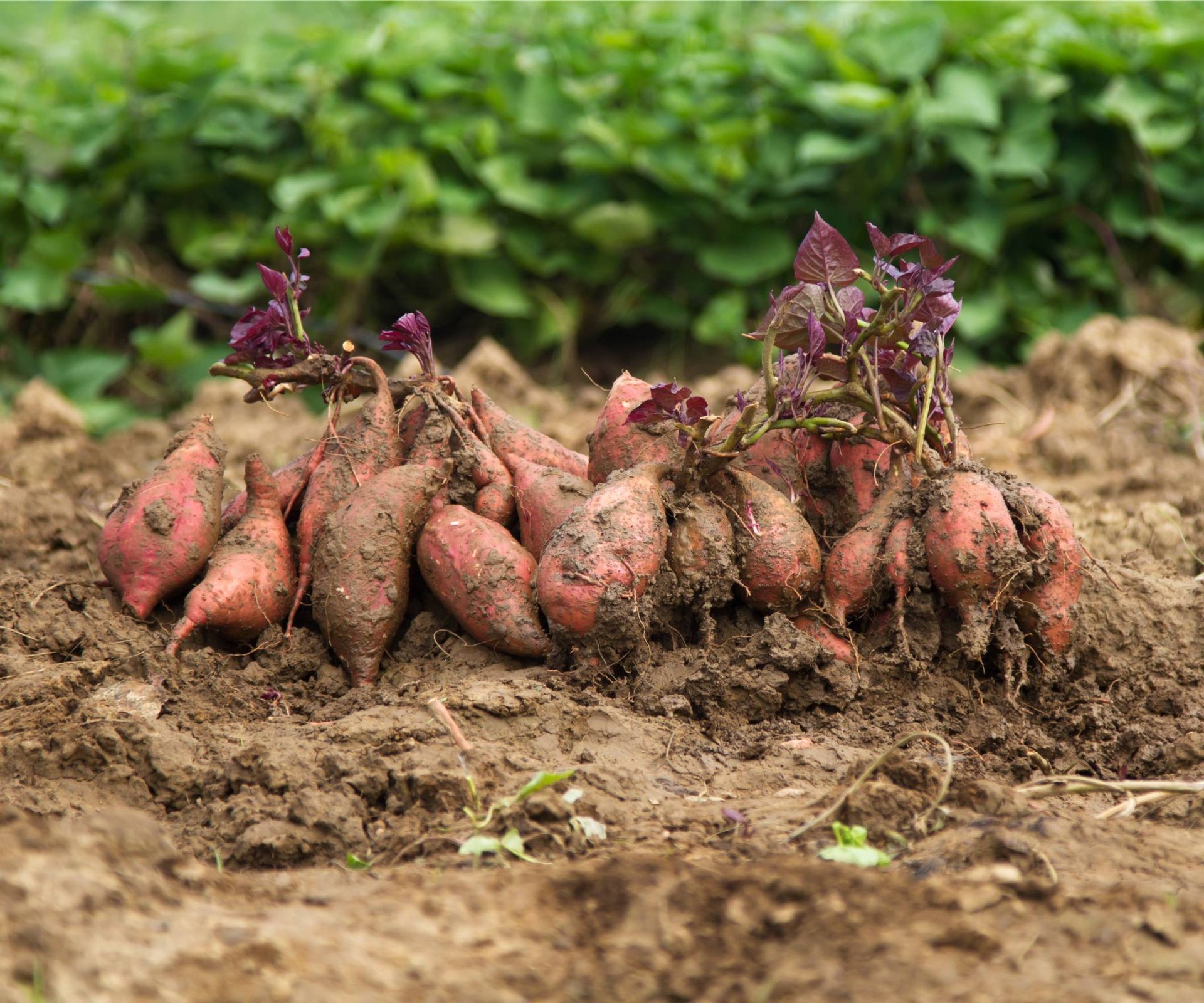No products in the cart.
NEWS
Mastering Sweet Potato Cultivation: A Comprehensive Guide
Sweet potatoes (Ipomoea batatas) are a rewarding crop, known for their delicious and versatile tubers. Originating from tropical regions, these plants are staples in many cuisines worldwide, from traditional Southern American dishes to popular foods in the Pacific Islands and Africa. While a perennial in warmer climates (USDA zones 9-11), they are commonly grown as annuals in temperate areas due to their sensitivity to cold. Growing sweet potatoes successfully relies on understanding their specific needs, particularly starting from “slips” – sprouts grown from the root. This guide, drawing on agricultural expertise and practical experience, will walk you through cultivating these delightful plants in your own garden.
Understanding Sweet Potato Plant Care Essentials
Growing sweet potatoes can be both fun and fruitful. Let’s explore the key factors for healthy plant development.
 Two small purple flowers with green leaves behind
Two small purple flowers with green leaves behind
Light Requirements
As a plant native to warm, sunny regions, sweet potatoes thrive on ample sunlight. For optimal growth and tuber development, they require at least 8 hours of bright, direct sunlight daily. When planning your garden layout, position sweet potato vines where they won’t be overshadowed by taller crops as they spread.
Watering Sweet Potatoes
While established sweet potato plants show good drought tolerance, consistent soil moisture is key to developing well-formed, abundant tubers. Water the slips thoroughly upon transplanting. Once the plants are established and actively growing, aim for approximately 1 inch (2.54 cm) of water per week. In sandy soils, which drain quickly, more frequent watering may be necessary to maintain adequate hydration.
Temperature and Humidity Needs
Sweet potatoes are warmth-loving plants. To successfully sprout your own slips, maintain temperatures of at least 75°F (24°C). When transplanting slips into the garden, ensure the soil temperature is between 60°F (15.56°C) and 85°F (27°C). These plants generally prefer higher humidity levels (around 40-50 percent) and do not perform well in very dry air conditions.
Ideal Soil Conditions
Choosing the right soil is critical for growing perfect sweet potatoes. A well-drained sandy loam or silt loam is considered the best type. Heavy or compacted soils can lead to small, misshapen tubers. Poor drainage also causes tubers to crack, develop rough skin, or become deformed. Ensuring good soil structure allows the roots to expand freely and the tubers to form correctly.
 Freshly harvested sweet potatoes atop soil
Freshly harvested sweet potatoes atop soil
Fertilizing for Success
Preparing the soil with the right nutrients before planting sets the stage for a strong harvest. Incorporate a balanced fertilizer, such as a 5-10-10 blend, directly into the soil prior to planting. Later in the growing season, typically around early July, side-dressing with a nitrogen-rich fertilizer like 21-0-0 can support healthy vine growth, which in turn fuels tuber development.
Addressing Common Problems, Pests, and Diseases
Sweet potatoes can face several challenges. Heavy soils and overwatering are frequent culprits behind malformed roots, mold spots, and bacterial soft rot. Common pests include sweet potato weevils, cutworms, beetles, and root knot nematodes. Deer may also graze on the vines. Leaf spots are also a possibility. To mitigate disease risk, avoid overhead watering, which keeps foliage wet.
Planting Your Sweet Potatoes Step-by-Step
 Small sweet potato plant grows on farm
Small sweet potato plant grows on farm
Sweet potatoes are typically planted on raised or “peaked” rows. Create rows that are about 12 inches (30.48 cm) wide, 10 inches (25.4 cm) tall, and spaced 3 feet (0.91 m) apart. Plant the slips after the danger of frost has passed and the soil has warmed sufficiently. Insert the cut end of the slip approximately 5 inches (12.7 cm) deep into the soil, spacing individual slips about 15 inches (38 cm) apart along the row. Water the newly planted slips generously. For gardeners with limited space, growing sweet potatoes vertically can be an effective alternative.
Harvesting Your Sweet Potato Crop
Sweet potatoes require a significant amount of time to mature, typically needing 90 to 120 days from the time of planting slips to harvest. The ideal time to harvest is before the first killing frost, often when the leaves begin to yellow. To harvest, locate the base of the plant (the crown) and carefully dig around the tubers by hand or using a fork, being cautious not to damage them. The tubers usually form within the top 10 inches (25.4 cm) of soil. After harvesting, allow the sweet potatoes to air dry before storing them in a cool, dark place.
 Farmer pulls bunch of sweet potatoes from soil
Farmer pulls bunch of sweet potatoes from soil
Propagating Your Own Slips
Sweet potatoes are propagated from slips. If you only need a few plants, you can sprout a sweet potato tuber by suspending part of it in water until roots form. For a larger number of slips, place small tubers in a container with a couple of inches (5 cm) of moderately moist soil. Cover the emerging shoots with more soil as they grow. Keep the container warm, ensuring the soil maintains at least 70°F (21°C). Slips are generally ready for planting in about 6 weeks, or when they reach 6-8 inches (15-20 cm) in length.
Exploring Sweet Potato Varieties
Numerous sweet potato varieties exist, offering different flesh colors, flavors, and resistances to pests and diseases. Selecting a variety suited to your local conditions and desired traits is beneficial. Some varieties known for specific resistances include:
- ‘Evangeline’: Offers resistance to root knot nematode, Fusarium, Rhizopus, and root rot.
- ‘Jewel’: Known for resistance to root knot nematode and Fusarium.
- ‘Bonita’: Also resists root knot nematode and Fusarium.
- ‘Centennial’: Shows resistance to wireworm and Fusarium.
 Freshly harvested sweet potatoes sit in dirt
Freshly harvested sweet potatoes sit in dirt
Frequently Asked Questions About Growing Sweet Potatoes
What is the best method for planting sweet potatoes?
The most reliable method is planting from slips, which can be either sprouted at home or purchased from a reputable supplier.
Can you plant sweet potatoes from the grocery store?
Yes, you can sprout a sweet potato from the grocery store to produce slips. If the tuber successfully grows roots and shoots when placed in water or soil, these slips can be planted.
Successfully growing sweet potatoes is a rewarding endeavor that provides a bounty of nutritious and delicious tubers. By paying attention to their needs regarding light, water, soil, and temperature, and by starting with healthy slips, you can look forward to a successful harvest. Exploring propagation and different varieties adds further depth to the experience. We hope this guide inspires you to cultivate sweet potatoes in your garden. Share your growing journey with Biogarden.asia!



